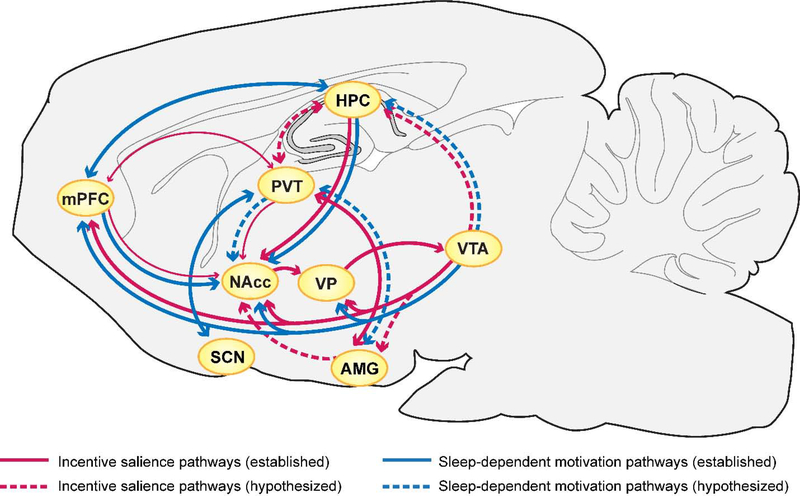Figure 1.
Overlapping circuits for sleep/wake regulation and drug/reward-related encoding. There is substantial overlap in the neural pathways involved in the attribution of incentive salience to cues (red) and those that mediate the effects of sleep disturbances on motivated behavior and reward seeking (blue). Solid lines represent pathways that have been directly studied in these functions, and dashed lines represent connections that are hypothesized to play a role. There are individual differences in the degree to which rats are susceptible to the incentive motivational effects of reward cues, with some rats (STs) demonstrating stonger attraction to cues than others (GTs). Sign- and goal-tracking behavior are associated with different patterns of activity in mesolimbic circuitry, most notably expressed as greater activity in dopaminergic VTA projections (thick lines) and reduced activity in PVT and mPFC projections (thin lines) in STs relative to GTs. Since much of the same circuitry also plays a critical role in the ability of sleep to influence emotional and motivational states, this ST/GT model should reveal important information about how sleep affects reward processing, and how the loss of sleep can enhance the ability of reward cues to gain control over behavior. The regions shown represent pathways involved specifically in the ability of sleep to alter motivation for reward; brainstem mechanisms of sleep-wake regulation are not shown. Abbreviations: mPFC – medial prefrontal cortex; PVT – paraventricular nucleus of the thalamus; HPC – hippocampus; NAcc – nucleus accumbens; VP – ventral pallidum; VTA – ventral tegmental area; SCN – suprachiasmatic nucleus; AMG – amygdala.

